
The importance of Collaborative BI in a more 'remote' working world
The world has turned upside down. You don’t need me to tell you that. And, thanks to weeks of working from home, a new way of working may be upon us when we flip back. Many are seeing this period as a pivotal time in changing the way many organisations will function. Business has seen first hand that it can run effectively with many of its people working remotely. Overnight, collaborative technology has been embraced, workflows have adjusted and opponents to ‘work-from-home’ have seen first hand that it can in fact work (and see where it doesn't).
This is a time for many businesses to capitalize on this moment by either reducing their office footprint or at least increasing the number of people they employ relative to the size of their office. I know if I still ran an agency, I would - forever changing the way we work together (or apart). So with the prediction of a more remote workforce the concept of Collaborative BI (Business Intelligence) is even more important.
It has been well documented that many leading businesses, despite increased spend on resources and analytics software, have ultimately failed to be data-led. And that was in a collaborative, face-face world. As we flip to a more remote, divergent workforce during a more economically testing time, this failure will only be amplified as the need for diligent data-driven decision making becomes even more crucial.
So, what is Collaborative BI?
By definition, Collaborative BI (collaborative business intelligence) or Social Business Intelligence is the “merging of business intelligence software with collaboration tools” In plain English, it’s tools that enable a wide range of people across a business to see, discuss and act on changes and insights that are happening in their business data. This is hugely important as I strongly believe that the only way a business can become data-led is if everyone in the business has access to the insights, learnings and actions taken from data, not just the ‘insights team’ and key decision-makers.
Whilst there are a lot of tools that facilitate more effective remote working such as Slack, Zoom, Jira and countless others, these do not support the process of true collaborative BI any more than a few people discussing an insight in the office over a coffee. The collaboration needs to happen and be stored where the data and insights lie to ensure trust, context and organisational visibility. No more than pre-COVID days, true Collaborative BI can’t rely on conversations just happening. We know this because they don’t. The problem is not the people and a wishful corporate directive that they use data more, it’s the ability for people to collaborate on data insights in a way suited to the everybody, including the everyday business user, in a governed environment.
How should BI platforms support this process?
Until now, BI software failed in delivering a platform in which organisations can effectively collaborate around data. If your BI platform does not deliver modern, usable collaborative tools, it is our belief that your organisation will never be data-led no matter how much money and resource is poured into it.
Unless collaboration tools can facilitate the kinds of discussions that need to happen so that most people in an organisation make decisions based on data insights or at least understand and trust the decisions that are being made on their behalf, most organisations and people are flying blind.
Collaborative BI is not annotations on a report or dashboard. Nor is it exporting data, charts or images and sharing on a third party collaboration platform or distribution system. Once this is done, all data lineage is lost and the ability to explore and interact with the data. Conversations and actions taken around a particular insight lie somewhere else and over time, learnings will diminish. Collaboration needs to extend beyond those in ‘data teams’ with tools within a BI platform that enables anyone (with permission) to firstly have visibility to the data, author or view any supporting narrative or context, engage in discussion and finally, take or assign action and ownership.
Defining and believing in this journey has underpinned why a significant part of our product development roadmap over the last couple of years has focussed nearly entirely on the needs of the business user and their need to discover and collaborate, not just the data expert. It began well before my time with the introduction of a timeline, tasks and an activity feed (or comments) and continued through to the development of Data Storytelling tools including Yellowfin Stories, Yellowfin Present and the recent release of Blueprint, a collaboration tool created to bring together business users, developers, analysts and designers.
What this means for the business user
Collaborative BI is what gets everyone outside the data analyst team - It’s the difference between a static dashboard or report that is open to individual interpretation or sometimes total lack of understanding and a data story that provides an explanation. It’s the ability to see a change and to be able to discuss, ask questions, assign and have visibility on who else is aware of the change. Or the ability to know or understand something and help others by providing context and sharing insights. It’s taking the conversions that happen (or didn't happen) out of the informal world of a face to face office and surfacing them in the trusted and secure BI platform. It can start with ensuring more people actually seeing any changes in data, recently made a reality with advancements in automated business monitoring including AI-powered data discovery. It can include assignment of tasks, data-led presentations, timeline-based notifications with social interactivity like commenting, sharing and liking.
Ultimately it’s the tools that enable the rest of us ‘non-analyst types’ to collaborate, make decisions and take actions around data insights or see how and why others around us have.
Ok, I get the theory, now show me what this really looks like.
The best way to really demonstrate this principle is to show Collaborative BI in action including the tools, people and processes. The following journey happened recently and came from a change in our Google Analytics data which we also monitor in Yellowfin. It highlights perfectly what true Collaborative BI looks like. What is super important to note here is none of the people collaborating on the insight sit in our data and insights team.
Yellowfin's AI-powered data discovery tool detected a change in traffic to a pretty important page on our marketing website.
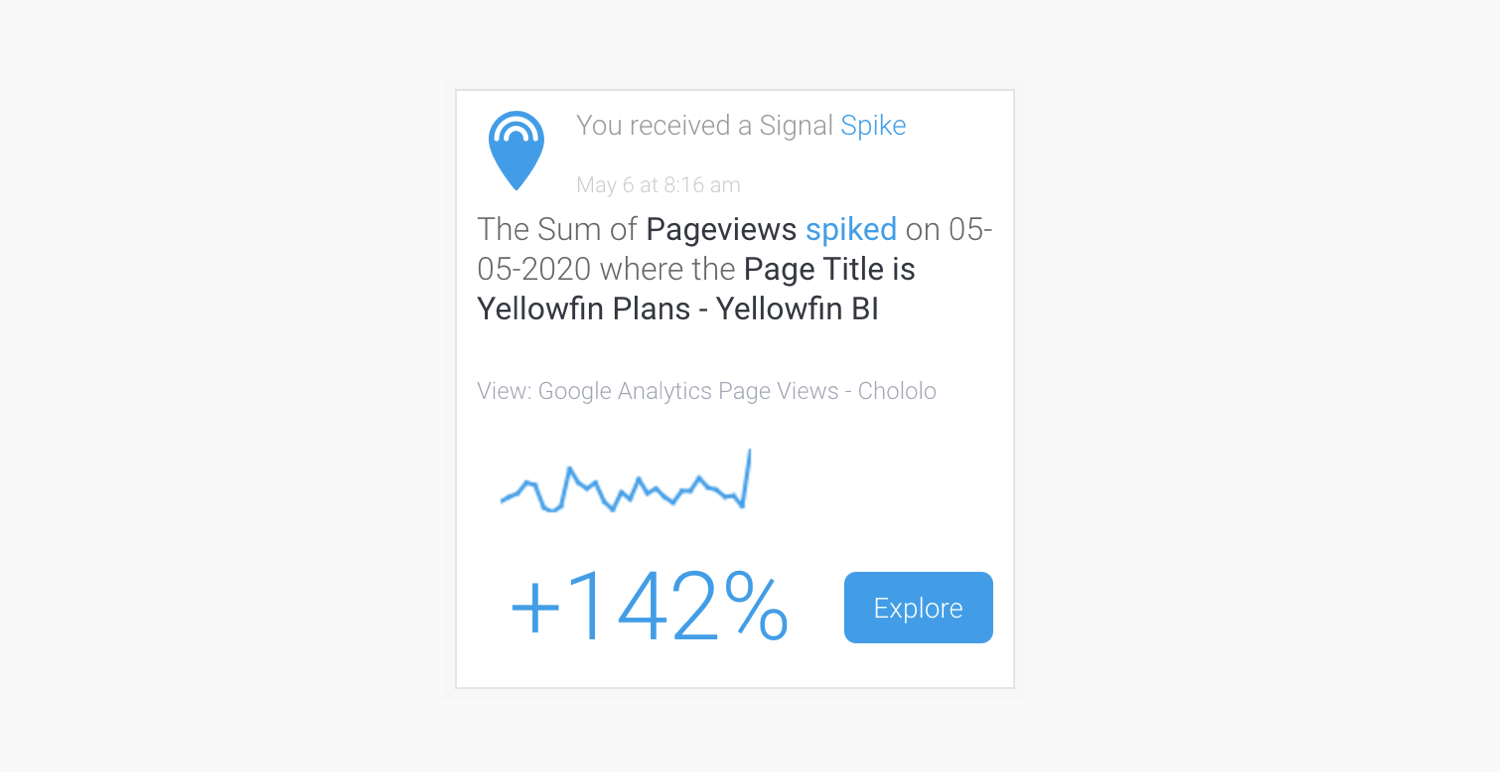
Being our 'Plans' page, I was interested and clicked 'explore' to review. Importantly, I didn't go looking for this change, it found me (and others in the team) when it happened. And despite being a 142% lift, the insight was hidden in our data because though an important page in the sales process, it's contribution to overall page views is lost as there are many more trafficked pages. Collaboration begins here as I can see who else has seen the change, who is watching it. Take ownership and start looking for answers.
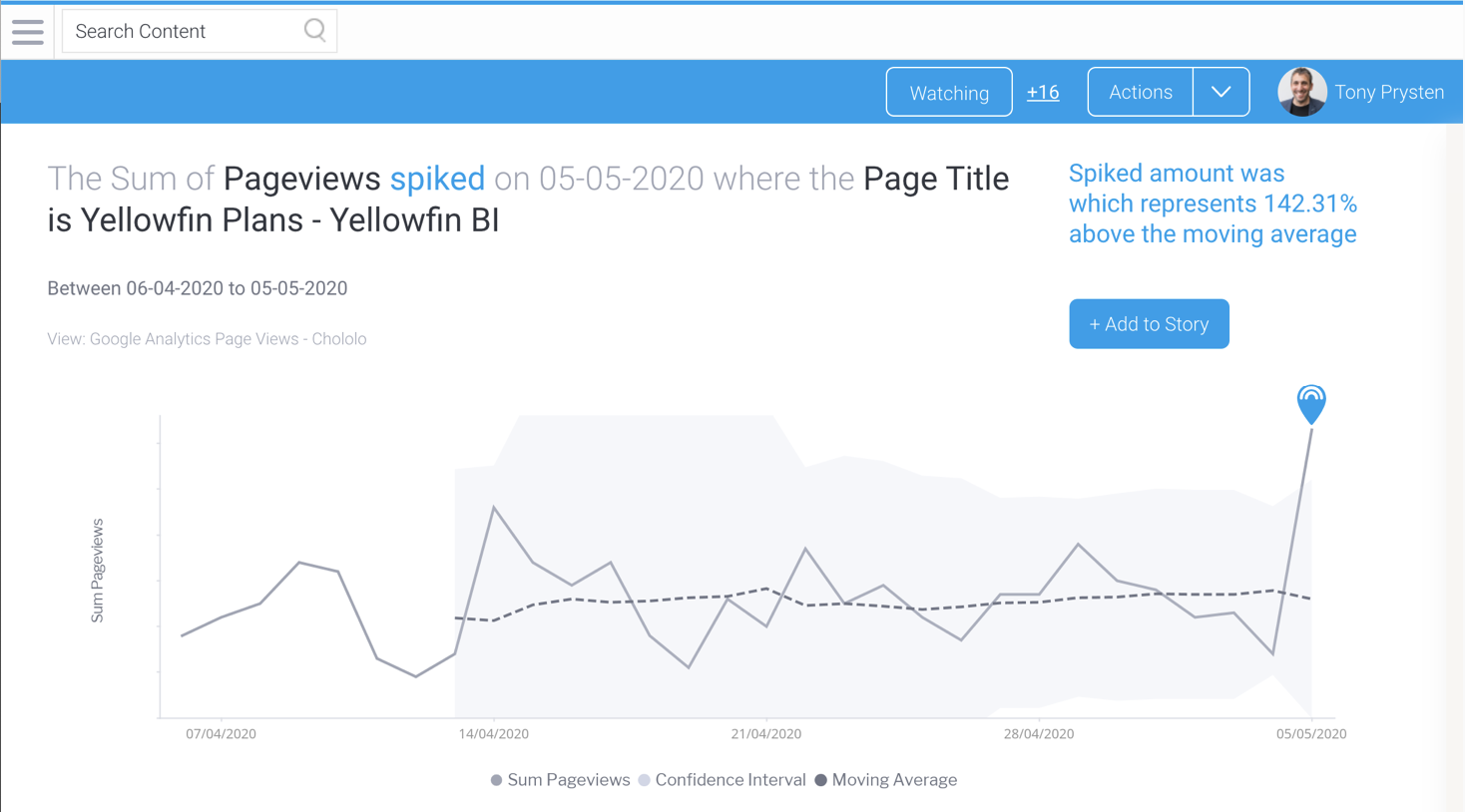
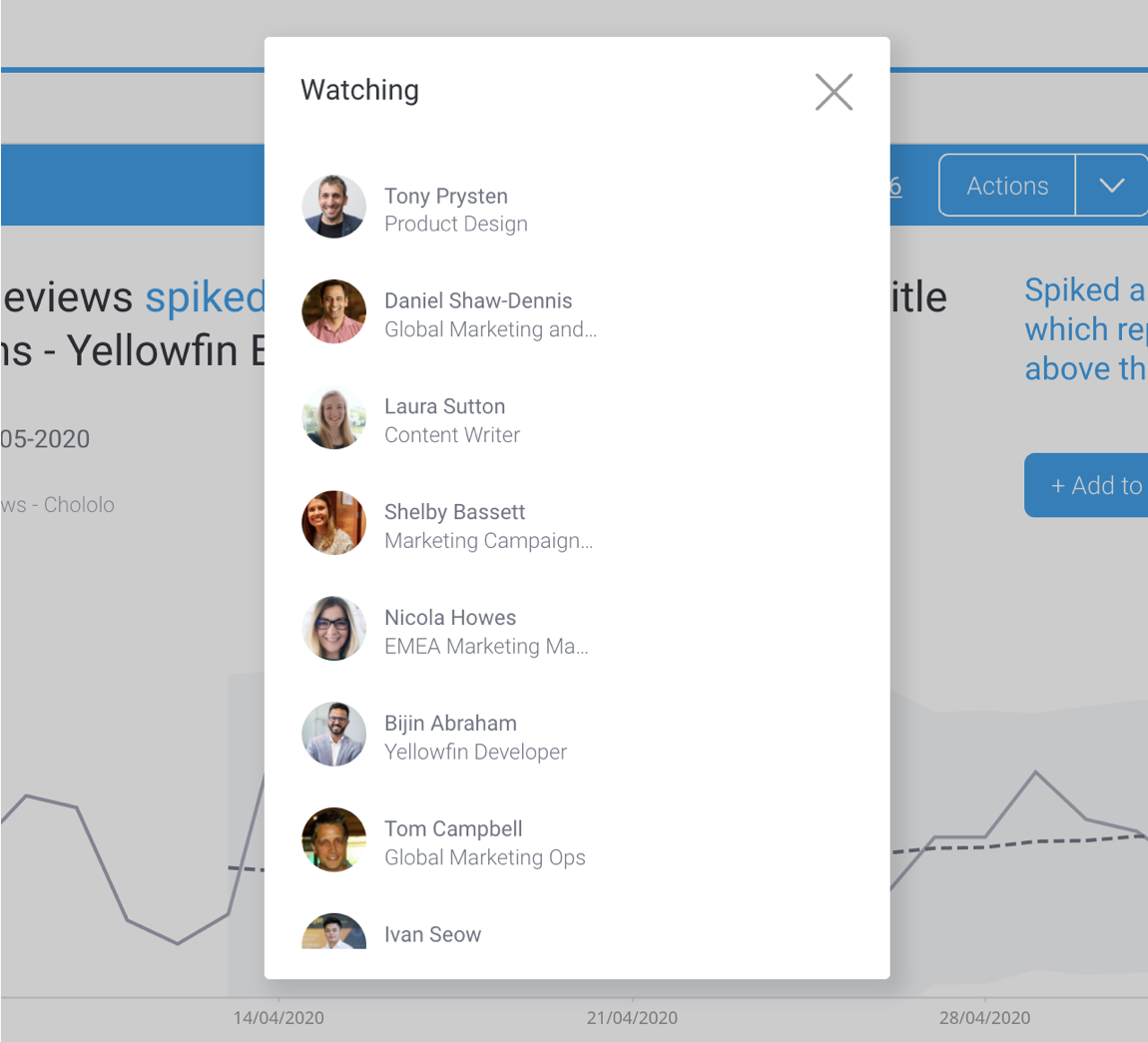
A discussion is had around the change in the data.
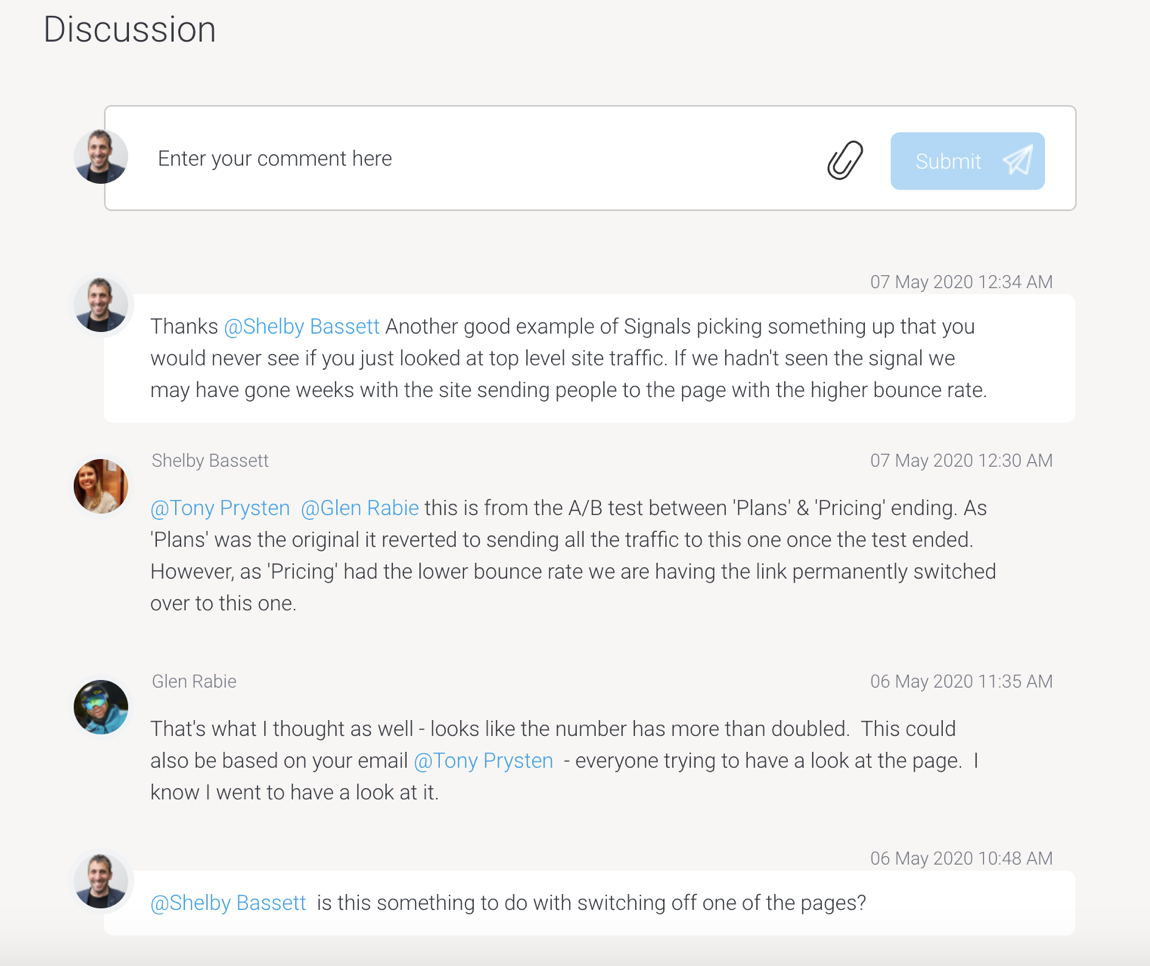
I take ownership of the change as I want to share the insights gained from this change. Everyone following this Signal will be notified of any discussions or actions like these.
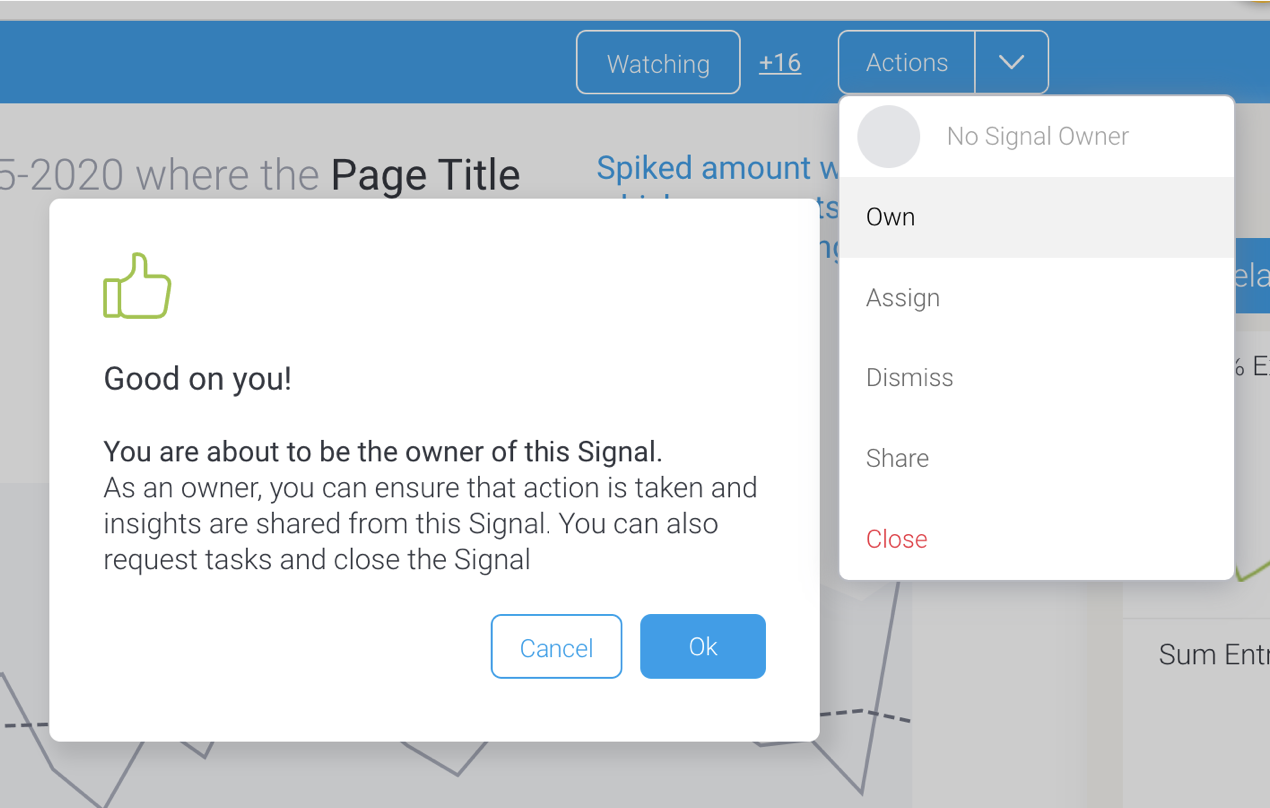
I then start a data story to share the learnings with the wider organisation.
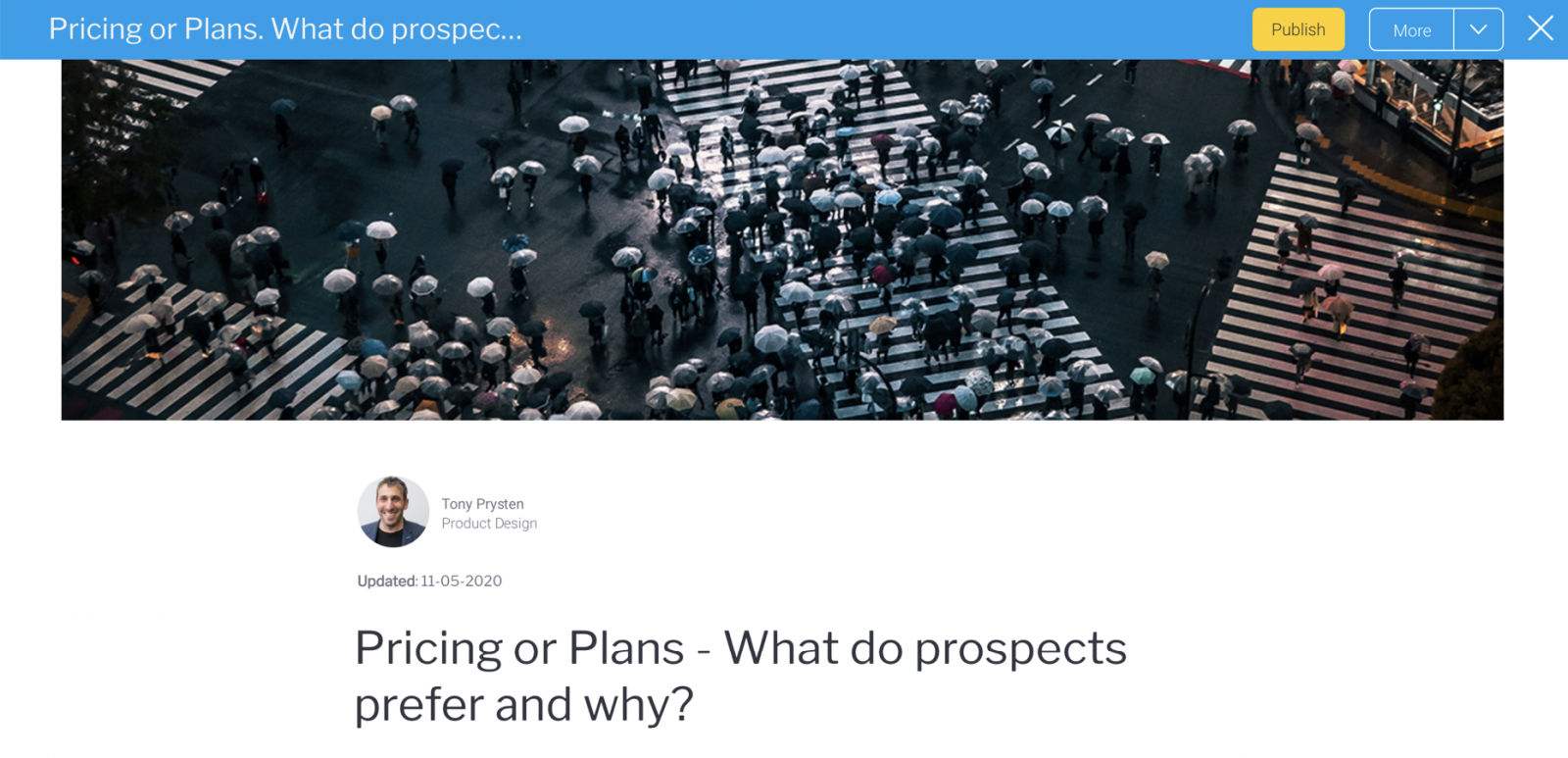
And invite others far smarter than me to collaborate on the story.
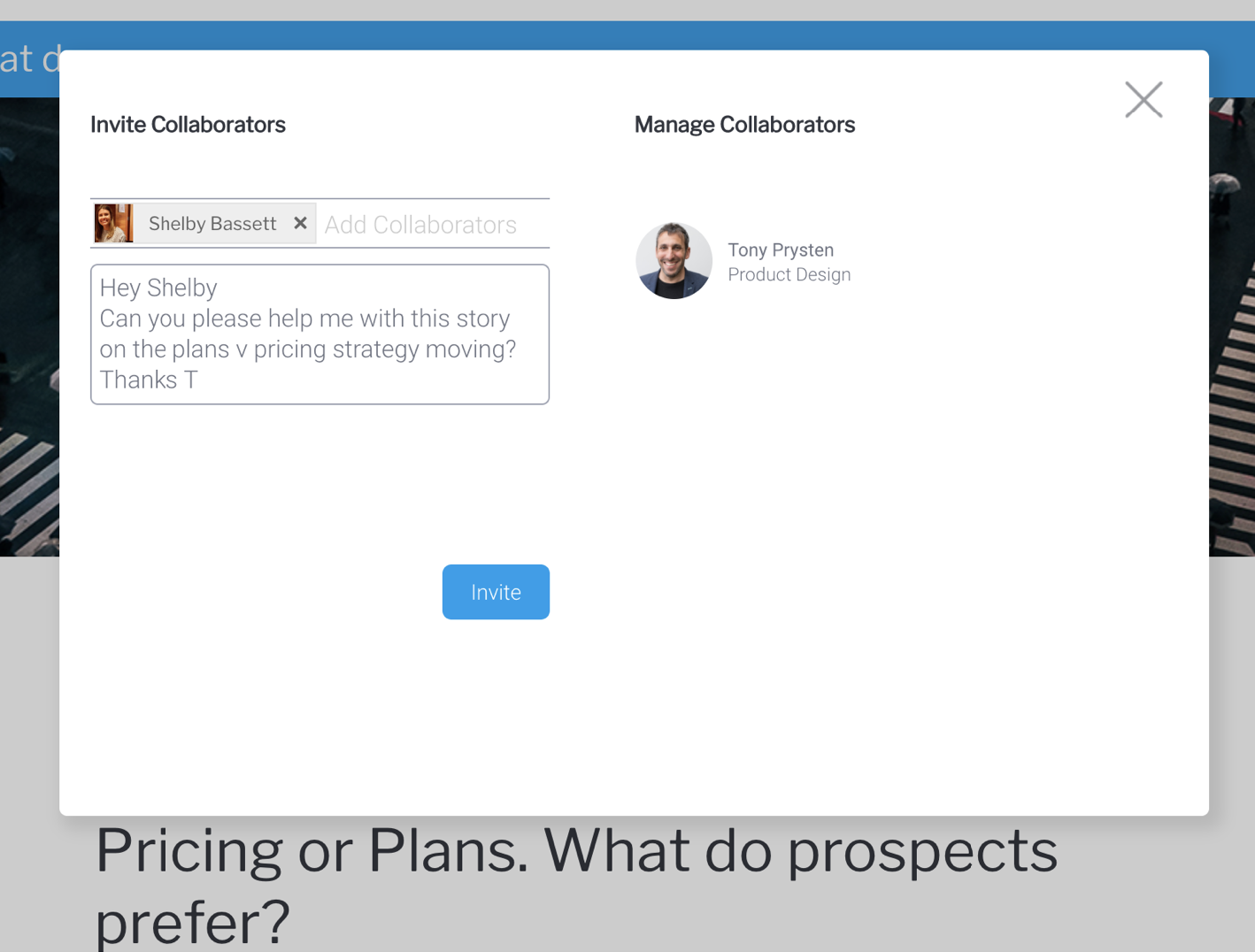
These collaborators are notified of the request and can subsequently invite others to contribute or review.
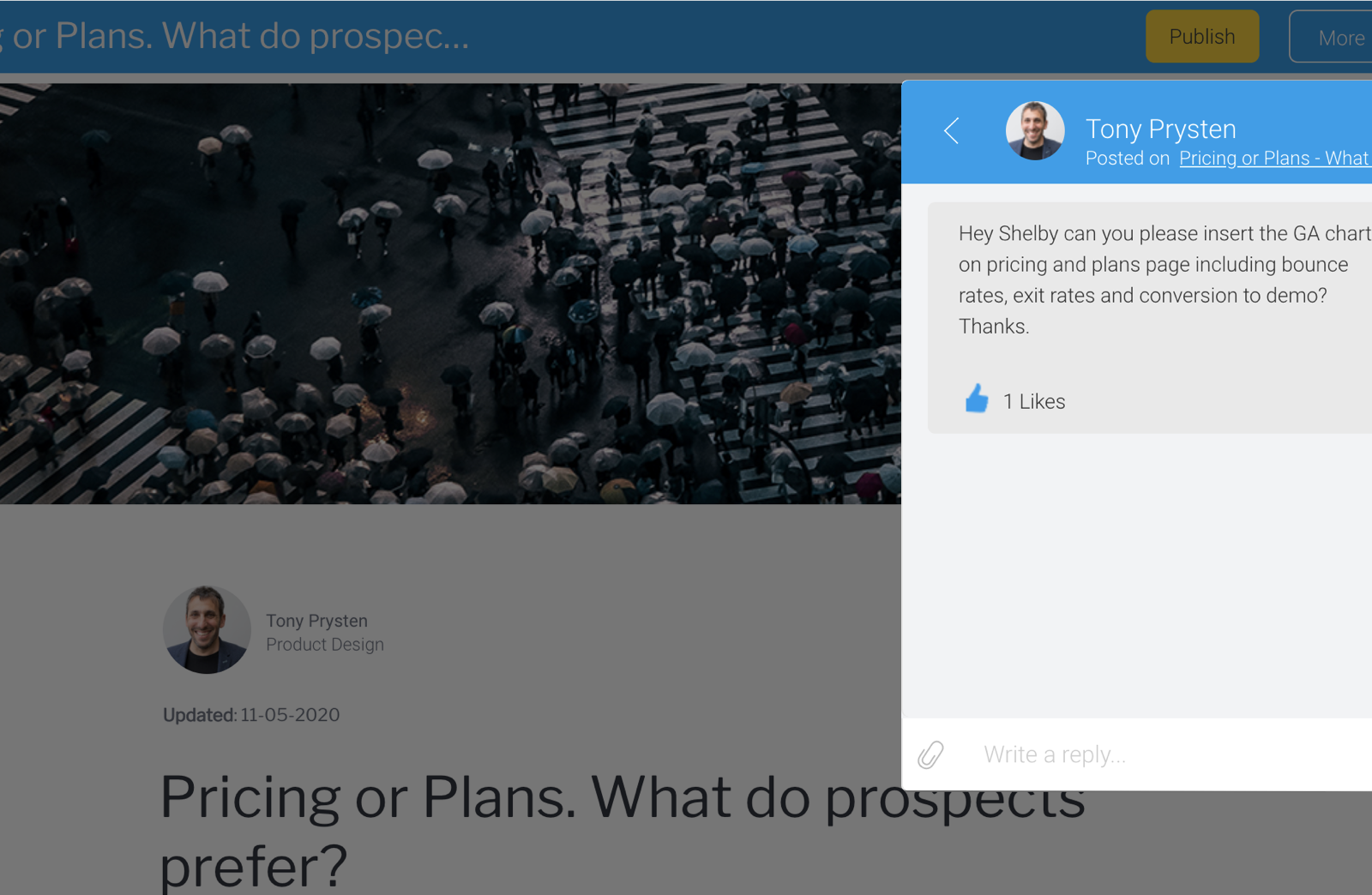
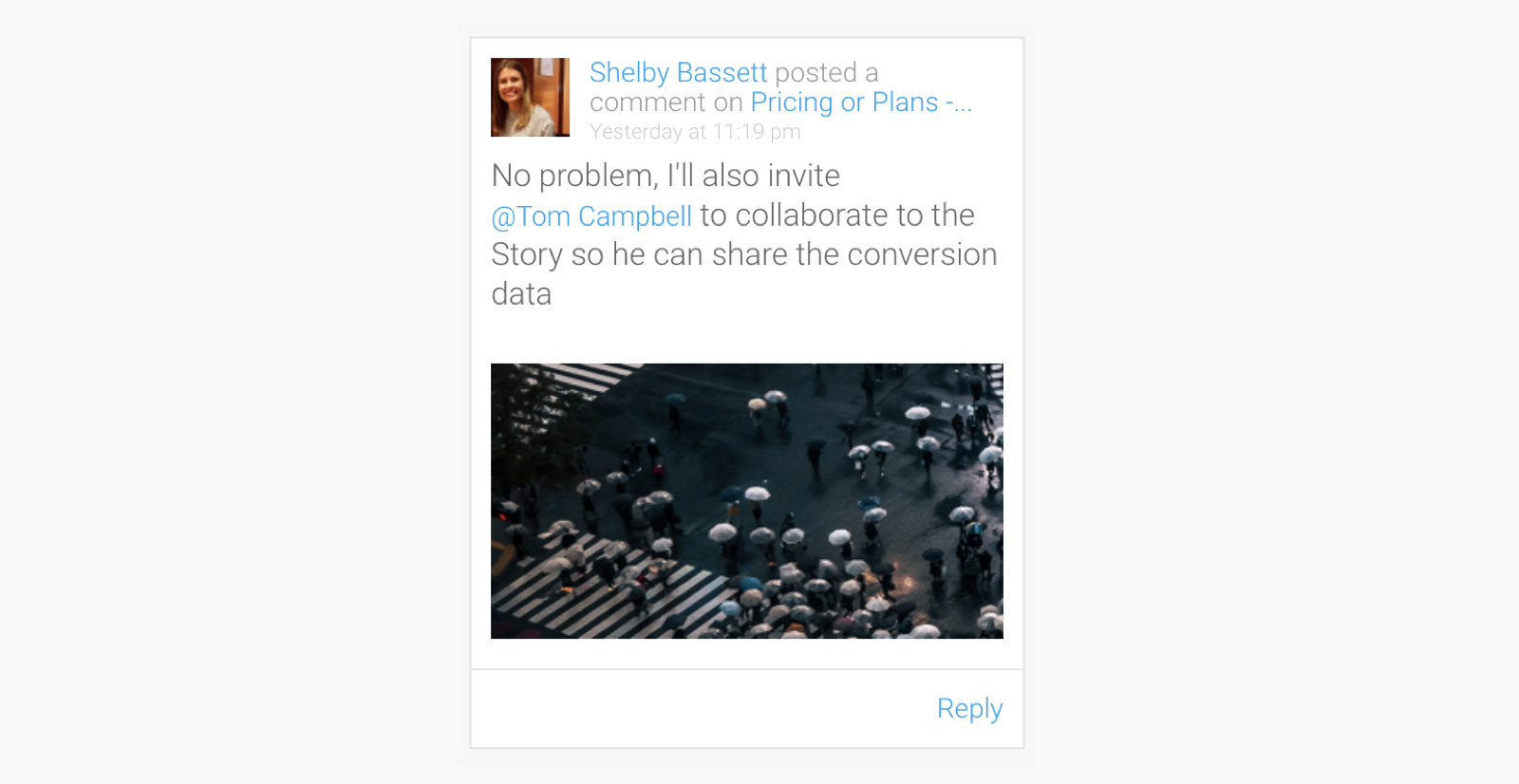
All of this happened in Yellowfin. In a secure, trusted environment so that everyone in the organisation could see and learn from the conversations and insights gained from a single change in our data. That folks, is Collaborative BI and it was all done without a Zoom call!
The Future of Analytics Departments
Automation is transforming analytics so you can get to answers and make data-driven decisions faster than ever. Download the paper to find out:
- The change that’s coming
- What does the future analytics team look like?
- The opportunity that awaits